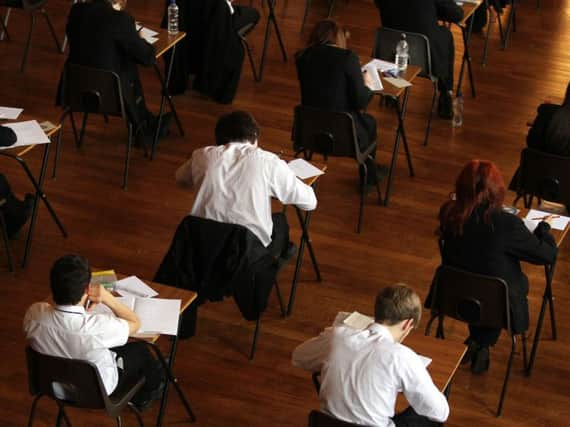Revealed: The North East schools said to be 'under-performing' in new Government tables


One in eight of England's mainstream secondaries - 365 in total - fell below the government's minimum standards in 2017, according to new statistics.
This is up from 282 schools, just under one in 10 - the year before.
Advertisement
Hide AdAdvertisement
Hide AdAccording to Press Association analysis of the data, it means 260,783 schoolchildren are now being taught at under-performing secondaries - about one in 12 (8.6%), compared to 206,991 (6.8%) in 2016.
Schools fall below the government's performance threshold if pupils fail to make enough progress across eight subjects, with particular weight given to English and maths.
There were 365 state-funded mainstream secondary schools in England that did not meet the Government's floor standard for performance in 2017.
The North East schools contained on the list are:
Northumberland CofE Academy, Ashington
The Blyth Academy, Blyth
Longfield Academy of Sport, Darlington
Polam Hall School, Darlington
St Aidan's Church of England Academy, Darlington
Belmont Community School, Durham
Fyndoune Community College, Durham
Durham Community Business College for Technology and Enterprise, Durham
Heworth Grange Comprehensive School, Gateshead
Thomas Hepburn Community Academy, Gateshead
Laurence Jackson School, Guisborough
High Tunstall College of Science, Hartlepool
Kepier, Houghton le Spring
Hetton School, Houghton le Spring
Unity City Academy, Middlesbrough
Middlesbrough College, Middlesbrough
Hillsview Academy, Middlesbrough
Discovery School, Newcastle upon Tyne
Walbottle Campus, Newcastle-upon-Tyne
NCG, Newcastle-upon-Tyne
Norham High School, North Shields
East Durham College, Peterlee
Huntcliff School, Saltburn-by-the-Sea
Tyne Coast College, South Shields
South Shields School, South Shields
Whitworth Park School and Sixth Form College, Spennymoor
Advertisement
Hide AdAdvertisement
Hide AdTanfield School, Specialist College of Science and Engineering, Stanley
Academy 360, Sunderland
Red House Academy, Sunderland
Thornaby Academy, Thornaby
Washington School, Washington
The Department for Education (DfE) said the rise in under-performing schools is because of technical changes to the points system used by government statisticians to calculate a school's performance.
The rise comes amid major changes to England's exams system, including the introduction of a new grading system, which has meant the data includes English and maths GCSE results awarded new 9-1 grades while other subjects received traditional A*-G grades.
School leaders said the new grading system affecting English and maths has complicated the way school performance is calculated, as it has to be worked out using a combination of old and new grading systems.
Advertisement
Hide AdAdvertisement
Hide AdGeoff Barton, general secretary of the Association of School and College Leaders (ASCL), said: "As the DfE itself says in today's statistics, these changes are the main reason why there has been an increase in the number of schools which are deemed to be below the 'floor standard' for Progress 8.
"It is extremely unfair that more schools find themselves in this situation because of complex changes to the way in which this is calculated.
"Our message to the DfE, trust boards, governors and inspectors is to avoid leaping to judgement on the basis of these performance tables. They only tell us a limited amount about the true quality of a school."
Schools are judged against a measure called Progress 8 which looks at the progress a pupil has made between the end of primary and the end of secondary school, and their results across eight GCSEs compared to their achievement of other youngsters with similar abilities.
Advertisement
Hide AdAdvertisement
Hide AdA secondary is considered to be below the government's floor standard if, on average, pupils score half a grade less (-0.5) across eight GCSEs than they would have been expected to compared to pupils of similar abilities nationally.
The DfE insisted that where schools have fallen below the floor standard, the data is "a starting point for a conversation about school improvement."
Schools Minister Nick Gibb highlighted a narrowing gulf between the results of rich and poor pupils.
"The attainment gap between the most disadvantaged pupils and their peers has narrowed by 10% since 2011 and more disadvantaged pupils are studying the core academic subjects, ensuring they have the knowledge and skills they need to make the most of their lives," he said.